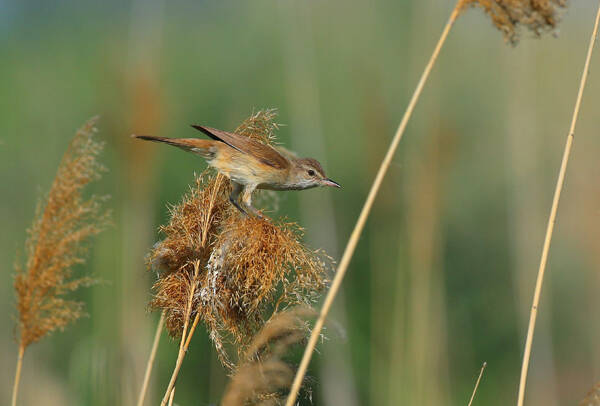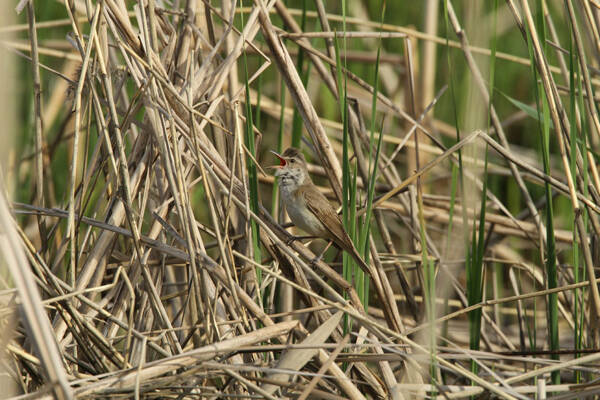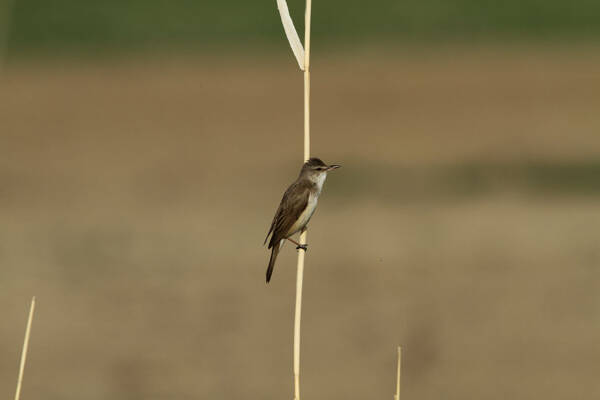Acrocephalus arundinaceus
IUCN
LCBasic Information
Scientific classification
- name:Acrocephalus arundinaceus
- Scientific Name:Acrocephalus arundinaceus,Large reed bundle, reed string, reed katydid
- Outline:Songbird
- Family:Passeriformes Ornithogalidae R.Warbler
Vital signs
- length:165-195mm
- Weight:17-33g
- lifetime:
Feature
The most common species in my country is the Great Reed Warbler, which is the largest of the warblers.
Distribution and Habitat
In China, it is only distributed in western and northern Xinjiang. Abroad, it is widely distributed from most of Europe to central Asia, and migrates long distances to southern Africa for wintering.
It lives in dense reeds on lakes, rivers, ponds, reed swamps at an altitude of 200-1500 meters, or in nearby bushes and gardens. It often hides in reeds by rivers or lakes, and sometimes flies to nearby trees.
Appearance
The male and female Great Reed Warblers have similar plumage. They have brown upper body, yellow eyebrow stripes, white lower body, and brown breast, flanks, and undertail coverts. They have brown irises, brown upper bill, lighter base of lower bill, and grayish brown feet. They have thin bills, like most insectivores.
Details
The Great Reed Warbler is a small bird, commonly known as the Great Reed Warbler, the Reed Casper and the Reed Grasshopper. It is sexually active, often jumping and climbing between grass stems, reeds and bushes alone or in pairs. It is extremely alert, changing its position from time to time and suddenly appearing in another place. During the breeding period, it often stands on the top of reeds or small branches near the nest to sing. Sometimes it stands on the branch and sings continuously for a long time, sometimes it changes its position to sing, or moves for a while, sings for a while, or moves while singing. The call is loud, harsh and incoherent, with a heavy guttural sound, mixed with sharp and high calls and low croaks. The call includes a harsh "tack" and a squeaking "churr". From a distance, it sounds like a continuous "ga, ga, ji-", which is often mistaken for the call of frogs.

The Great Reed Warbler is a bird that mainly feeds on insects. Its food includes spiders, ants, beans, beetles, aquatic insects, and snails. It has been seen that the stomach of a Great Reed Warbler is full of pests of the Lepidoptera noctuidae. In addition, they also eat some aquatic plant seeds.

Based on its diet, the Great Reed Warbler is a bird that is beneficial to agriculture and should be protected. The Great Reed Warbler is a summer migratory bird in my country. In summer, it can be found in reeds near waters all over my country, and in autumn, it migrates to the south to overwinter.

The breeding season of the Great Reed Warbler is from May to July. During the breeding season, it makes a noisy "quack" sound. It builds its nest in reeds and bushes, fixed on a bunch of plants or reed stems 0.5-1.2 meters above the water surface (or the ground). The nest is cup-shaped and is mainly woven from reed leaves, dead grass stems, grass leaves, flower stalks, plant fibers and spider webs. The inside is padded with dry grass leaves, thin grass stems, fibrous roots, etc., and sometimes feathers. The female bird is mainly responsible for nesting, and the male bird often accompanies the female bird in transporting nesting materials. The size of the nest is: 9-14 cm in outer diameter, 5-9 cm in inner diameter, 27 cm in height, and 6-7.5 cm in depth. Each nest lays 3-6 eggs, which are green-white or blue-green, with brown or olive brown spots and black-gray or gray spots. The size of the egg is 21-25 mm × 15-17 mm. The female bird is responsible for incubation, and the incubation period is 14-15 days; the chicks stay in the nest for about 12 days.








